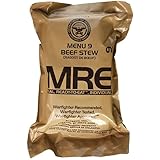Site Assessment and Planning
Understanding Your Property
To start harvesting rainwater, the first step is to really get to know your own property. I once thought it was about just plopping down a barrel, but it’s way more nuanced than that. Walk around your land and take note of what areas collect water naturally. Look for slopes, pathways, and areas that seem to soak up rainfall like a sponge.
Next, think about the size of your roof and how much rain falls in your area. For example, if you live in a region with a decent rainy season, a larger collection system would definitely work in your favor. I’ve seen how a simple analysis can drastically change how much water I can collect!
Lastly, consider your intended use. Are you looking to water your garden, fill your pool, or maybe use it for your car wash? Knowing how you’ll use the water will help you decide on the right storage solutions and filtration methods.
Choosing the Right Collection System
Understanding Different Systems
Now that you’ve scoped out your space, it’s time to explore the type of collection system you need. When I started, I was overwhelmed by options, but I learned that rain barrels are great for beginners. They’re affordable and easy to install right under your downspouts.
For those looking for something more robust, continuous systems or cisterns might be the answer. These can hold a lot more water and are ideal if you want to stock up for drier months. I still remember the joy of watching my large cistern fill up after a nice rain!
Also, consider the materials these systems are made from. Some materials are more resistant to algae growth, which makes maintenance a breeze. I’ve had my fair share of struggles with green barrels, so choose wisely!
Installation and Maintenance
Setting Up Your System
Once you’ve chosen your system, it’s time to get your hands dirty! It helps to have a buddy with you — everything’s easier with a friend, am I right? Begin by placing your barrels or cisterns in optimal areas where they can easily catch the most water. I made the mistake of placing mine in a shaded area; believe me, that’s a rookie mistake!
Depending on your chosen collection system, connecting downspouts might require some DIY skills. But don’t fret; simple tools and a bit of courage can lead you to victory! Just ensure there are no leaks. I’ve had a few of those, and it’s super frustrating to see precious water go to waste.
== > What if ... Get a FREE Subscription to PREPARE
Once everything is set up, it’s crucial to keep your system in check. Regular maintenance, like cleaning filters and checking for leaks, can save a lot of hassle down the line. Plus, it feels pretty good knowing you’re doing your part for the environment!
Water Filtration and Purification
Setting Up Effective Filtration
Okay, let’s talk about keeping your harvested rainwater clean. If you’re planning to use your rainwater for anything more than watering plants, it’s vital to invest in a good filtration system. I first went cheap and realized that wasn’t a great idea — not all filters are created equal!
Get Preparedness and Self-Reliance Tips. Subscribe Now!
Use mesh screens to catch debris before it gets to the barrel or cistern. This is super important because once leaves and dirt get into the system, they can lead to clogs and even funky odors. Trust me, nobody wants that!
If you’re serious about purification, look into ultra-violet light systems or carbon filters. They’re a bit pricey but can remove harmful pathogens. My family drinks some of our harvested rainwater, and knowing it’s safe makes all the difference!
Utilizing Harvested Water Efficiently
Best Practices for Usage
Now that you’ve got a system in place and you’re all set to collect rainwater, it’s time to talk about how to use it wisely. I’ve found that using this water for my garden has been the best move. Not only is it free, but my plants absolutely love it!
However, be mindful of how you use it. It’s essential to balance out the usage to ensure you’re not draining your system dry during a dry spell. I also try to take the time to learn about the watering needs of different plants; this keeps my garden thriving during those hot months.
Lastly, always have a backup system in place. I know this might sound a bit paranoid, but having a secondary source of water will take the pressure off your rainwater collection system, especially during long dry spells. Stay prepared, my friends!
FAQs
1. Can I drink harvested rainwater?
Yes, you can drink harvested rainwater if it has been properly filtered and purified. However, the methods you use will depend on local regulations and your specific setup.
2. How much rainwater can I realistically collect?
This largely depends on your roof size and the average rainfall in your area. Generally, for every inch of rain on a 1,000 square-foot roof, you can collect about 600 gallons of water.
3. What maintenance does my collection system need?
Regular maintenance includes cleaning out your barrels, checking for leaks, and cleaning or replacing your filter systems to ensure that the water stays clean and doesn’t develop algae.
4. Is rainwater harvesting legal in my area?
It depends on where you live. Many places encourage rainwater harvesting, while some have specific regulations. Always check with your local guidelines before setting up your system.
5. Can I use rainwater for my garden?
Absolutely! In fact, using harvested rainwater for gardening is one of the most common uses. Just ensure it’s clean and safe for your plants!






